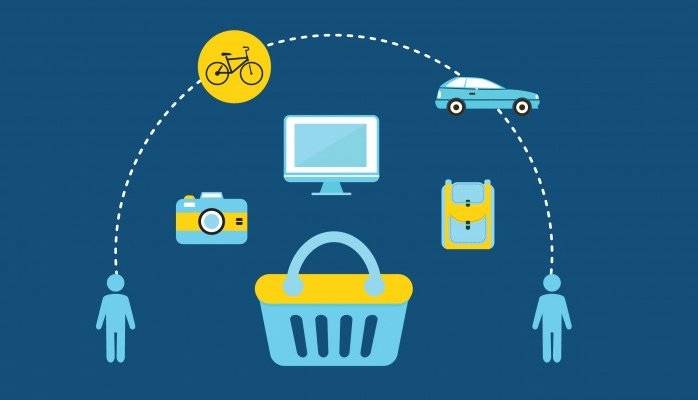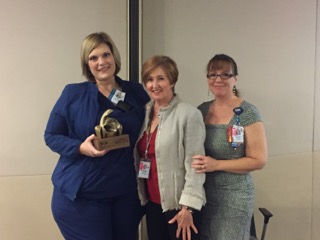5 steps to building scale in the on-demand economy
September 26, 2016
It seems like over the last five years, with the rise of the on-demand economy, you now have a service for every chore on your list and for a few you didn’t even know existed. Around every corner there is a group of people just waiting to pick up your laundry, put your IKEA furniture together, feed you, clothe you, and at the end of the day, give you a nice massage – because who doesn’t need a nice rest after a long day of tasking other people with your life??? Not only is there a service for anything you can dream of, but in most cases there are multiple services competing with each other.
But why are there so many of these on-demand services popping up? It’s become simple to get into this space, but it’s proven much more difficult to be successful. The barrier to entry into this new marketplace is relatively low. Create an app for consumers and another one for your providers, then create a server side that matches them to each other, and you are ready for your big launch party. Better yet, instead of building your own solution, you can simply start using a platform that already has everything figured out: the apps, the server, and the matching.
So if the technological barriers are that low, why do so many of these startups fail to achieve scale? Is it possible that there is more to it than just having an app? Is it about more than just getting users to sign up? We believe it is. Veyo is dispatching more than 15,000 trips a day in a variety of geographies from downtown Phoenix to rural Idaho. And we can’t just match half of our trips. Every member that we transport has to make it to their healthcare appointment on time. Many have special needs and can’t just jump in a taxi or order a car on their phone (many don’t even have smartphones), and each region is different. Dispatching a trip in downtown Denver isn’t the same as dispatching a trip in downtown Tucson. And things get more complicated as we add in hours of the day, days of the week, and uncontrollable effects like weather and traffic. Technology is a major enabler in solving these questions, but it is by no means a replacement for the detailed understanding of the supply and demand efficiencies involved in truly providing a solution for the on-demand market.
How do we get to that solution? The following 5 steps can be used as guidelines to understand the true challenges of the on-demand market:
- Understand the true value dynamics created by your service.
- Achieve scale in a limited geography and prove the value exists.
- Identify ways to increase value within your ecosystem.
- Learn how to predict value and identify what influences value.
- Automate and scale.
1. Value Dynamics
Every product starts with a simple question – “Why?” In our case: why does the customer need this service? In order to really understand the value you’re creating, it’s important to have solid answers to these 10 questions:
- Who is the customer?
- Why does the customer need this service?
- What is the customer doing today without your service? (Hopefully this answer is complicated…that’ll lead you to #4)
- How are you planning to make your customer’s life easier? (Sidenote: Answering this question is really key to the rest of our discussion. We shall start referring to the delta in happiness between the life before your service to the customer’s new found purpose as… wait for it… VALUE.)
- Who generates this value today?
- Who will generate this value in the new world?
- How does value get from the value provider to the value consumer?
- Who affects the value generation by increasing or decreasing it?
- What other influencers can I expect to find in this ecosystem?
- And finally, are there efficiencies I can improve through my model, i.e. is there any economic benefit to doing this?
Value is that thing we do that makes the world a better place. By identifying who needs it, who makes it, and how we facilitate the transaction, we identify all the places we can improve the customer’s world. By naming the various players in our ecosystem and understanding the motives that drive them, we can create tools that facilitate and sometimes outright revolutionize these transactions.
2. Prove the Value
What did your customer do before you were there to heal their pain? If you are providing healthcare trips, how did members get to their healthcare appointments? How will you be creating value for members with your new solution? Are you providing an incremental improvement by making things a little better, or are you completely reinventing the space?
Henry Ford once said, “If I had asked people what they wanted, they would have said faster horses.” Customers tend to look for solutions within their sphere of knowledge. New products are difficult to explain because by their very nature, they are NEW. The solution you are creating has never existed before. You may understand the value you are generating, but you HAVE to prove your model works in the real world. Unfortunately, this isn’t always easy since most on-demand economies are truly revolutionary only at scale. Without enough trips, your drivers will sit idle and eventually leave the platform. Without enough drivers, members will not get to appointments on time. This vicious cycle will threaten to erode the true value that you are trying to prove. However, there are ways around this problem.
When creating an on-demand service, you do have to achieve scale, but you don’t have to achieve it all over the world at once. Your backyard will suffice to prove the model. Find a small area you are familiar with – preferably a small metro area that has some densely-populated neighborhoods vs. low density suburbs – and build your model out. This approach ensures your marketing efforts are focused, you can work in a familiar area, and you can start with an existing fan base. Learn everything you can about your chosen market. Use census data to learn about the economics, demographics and general statistics in your area, and use that information to determine how you should build your deployment.
3. Increase Value
If you’ve completed the first step, congrats! You’ve proved your value. You have identified all the players in your ecosystem and you’re one step closer to creating a truly revolutionary platform. Now it’s time to outline the various aspects of your value chain and decide what features to build. And more importantly, it’s time to decide where you should say “no”. With great growth come many many ideas. As you grow, your stakeholders will increase, and everyone in your ecosystem will have good ideas, but with limited resources there is only so much you can build. It’s critical to edit as you work, not after.
A good way to identify features that you should build is to look for features that will increase value for all participants in the chain, not just for a few of them. By focusing your development efforts on increasing value for everyone, you set a defined criteria for adding product features and ensure that every feature added is measured based on the value and impact it generates throughout the ecosystem.
A good example: Some Veyo Independent Driver-Providers (IDPs) are more consistent in their online time than others. That means that they like to drive every day or every week at the same time, while others prefer to drive at different times and on varying schedules. Both types of IDPs drive the same amount of hours, but each will respond differently to trips dispatched to them. If we can identify patterns in our IDP schedules and dispatch trips accordingly, we can ensure that more trips will be accepted and more trips will be completed. As demand increases and more drivers join the platform, we’ll be able to dispatch trips in the most efficient way, ensuring that our members get to their appointments on time.
4. Predict and Influence
One of the core pieces to building a successful transportation network is being able to predict supply and demand and identify what influences them. Being able to match supply with demand is one of the key features that sets us apart from our competitors. Data science provides multiple models to use in these predictions: time series analyses that use historical data to predict IDP participation, neural networks that predict the probability of a trip being canceled, and survival analysis that can be used to predict driver churn. These are just a few examples of the models we use at Veyo. By identifying the different variables in your system and proving out the solution, an abundance of data can be generated. You can then use that data to identify how to predict and influence behavior in your space.
But data needs careful analysis. Did you know that multiple studies show that an increased consumption of ice cream correlates to a serious hike in wildfires? Does eating ice cream cause wildfires? No. There is a big difference between causation and correlation. When people eat more ice cream, it tends to happen at when there are more wildfires – that’s correlation. But wildfires are not caused by people eating more ice cream. The cause of the wildfires and the cause of the increased consumption of ice cream is the hot weather – that’s causation. It’s important to know the difference and dig through your data. Identify what is truly causation, and don’t let random correlation mislead you.
As the name implies, data science is half data, half science. When testing models and ideas, build a platform that encourages scientific research. Approach experiments with scientific methodology by asking questions, searching for answers, building a hypothesis, experimenting with control groups, and testing different approaches. To be able to run experiments, the platform should easily allow you to select cohorts, A/B test, and access data for research and results. And don’t just allow data scientists access to the data. For better results, it’s important to democratize data access, meaning that everyone has access to data and that the data they’re accessing is secured and cleansed. Creating a secure star schema data warehouse that contains cleansed and accessible data is usually a good place to start.
5. Automate and Scale
You’re almost there. It’s time to automate and scale your platform. Time to go big. But in a smart way. Each time Veyo adds a contract, there are more trips to dispatch and more IDPs to manage. Each time we add IDPs, we could add more support center agents. And each time we get more trips to dispatch, we could do it manually. But neither of those solutions are scalable. The incremental cost (and time) of adding additional agents and manually dispatching would quickly become overwhelming. To truly achieve scale, you need to automate your processes.
There are many opportunities to automate and it’s important to note that every process in the organization can always be improved. The most important thing is figuring out where automation will bring the most value. For Veyo, our core functionality is the dispatch and distribution engine, and it is fully automated. Everything relies on that automation, and it’s revolutionizing NEMT. But how about something like the code deployment process? There are many opportunities for automation that are not within the immediate problem being solved (i.e. getting a car to someone on time) but are still required to achieve scale:
- New Market Implementations – Create a handbook on how to build out a new market. What are the statistics that are required? What tools does your platform provide? How does the onboarding flow work? Set up a process that creates proven step-by-step flows to get a new market into full scale. Don’t reinvent the wheel every time you open a new market.
- Development – Use continuous integration tools to automate your software deployment flow. Invest in QA automation to easily deploy new features without risking major setbacks.
- Sales – Use (don’t just buy the licenses…) a CRM platform. Identify the happy path from lead through qualification to customer and beyond, and build that process into a platform. Let the platform drive the flow and use its capabilities to automate campaigns and outreach efforts.
Look for any opportunity in your process to drive efficiency, improve, and automate. In the future we will all be replaced by AIs. It’s time to embrace that and move on.
Final Thoughts
The philosopher Jeremy Bentham talks about the distribution of happiness and asks, given a finite amount of happiness in the world, should we distribute that happiness equally and have everyone be mildly happy or should some people be happier than others? Is it possible to disrupt that equilibrium? Why can’t we make some people better off without making any one individual worse off? Wouldn’t that end up making the world a better place, and after all, wasn’t that what we set out to do?
Michael Singer
Michael guides our company’s product and technology vision as the leader of Veyo’s bright team of data scientists, product managers, engineers and designers that build beautiful and scalable solutions. Michael is fluent in six languages, has coded on three continents, in more than 30 countries using at least a dozen environments. He’s had a rich and impressive career at e-volution, Magic Software, CarPro, Smifr and he has worked with the likes of the United Nations, UPS and Adidas.
Although Michael’s career has been dedicated to delivering usable and scalable solutions, ultimately his favorite platform remains: his surfboard. Michael resides in California with his wife and twins.





